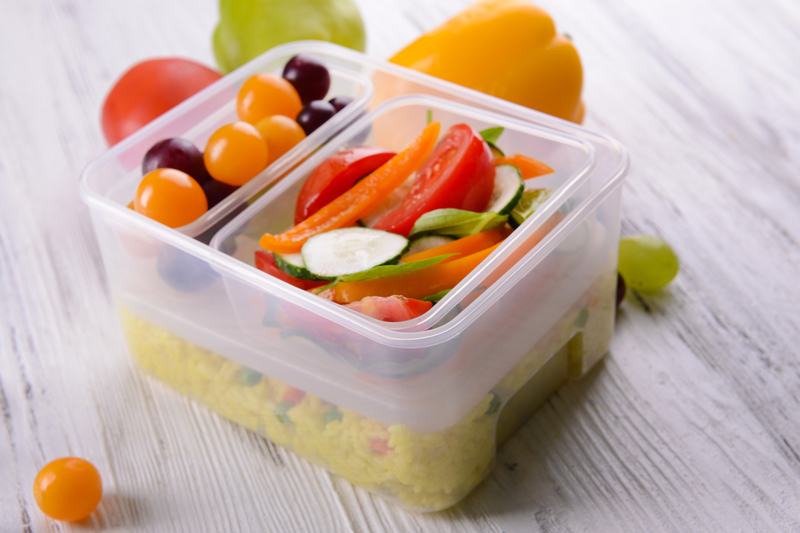Making Money by Scrapping Metal Pots and Pans: A Comprehensive Guide
Are you looking for a practical side hustle that fosters environmental responsibility while adding extra cash to your pocket? Making money by scrapping metal pots and pans is an increasingly popular way to clear out unwanted kitchenware and benefit financially. In this in-depth guide, we'll walk you through everything you need to know about scrapping old pots and pans for profit--from understanding what pots and pans are worth, locating scrap yards, to maximizing your returns and staying eco-friendly.

Why Scrap Metal Pots and Pans?
Every year, millions of pots and pans end up in landfills, contributing to environmental waste. But did you know those old, battered pans sitting in your cupboards might be worth significant money? Scrap metal recycling has become a lucrative industry, with metals like aluminum, stainless steel, copper, and even cast iron in high demand. Instead of throwing away old kitchenware, you can trade them in for cash while doing your part for the planet.
The Growing Demand for Scrap Metal
Global industries, including automotive, construction, and technology, are constantly seeking recycled materials. Old kitchen items, such as scrap pots and pans, provide valuable sources of recyclable metals. This demand ensures that prices stay competitive, and your scrapping efforts can be profitable all year round.
Environmental Benefits of Recycling Kitchen Cookware
- Reduces landfill waste - Fewer pots and pans in landfills means less harmful metals contaminating soil and water.
- Lowers energy usage - Recycling metals saves energy compared to producing metals from raw ores.
- Conserves natural resources - Keeps valuable metals in circulation rather than depleting Earth's reserves.
- Decreases greenhouse gas emissions - Recycling reduces carbon footprint associated with mining and production.
Types of Scrap Metals Found in Pots and Pans
Not all pots and pans are created equal when it comes to scrap value. Identifying the types of metals in your kitchenware is essential for maximizing your profits.
1. Aluminum Pots and Pans
Aluminum cookware is lightweight and common in older or inexpensive pots and pans. Aluminum is in high demand due to its extensive use in manufacturing and is easily recyclable.
2. Stainless Steel Cookware
Stainless steel is heavy, durable, and often has a bright, silver finish. This metal usually fetches a better price than aluminum. However, many stainless steel items have an aluminum or copper base or core, increasing their overall value.
3. Copper Pots and Pans
Copper is one of the most valuable scrap metals you can find in household cookware. Pure copper pots, copper-bottom pans, and even some decorative kitchenware can be sold for a significant profit. Look out for green oxidation or a reddish-brown hue in your cookware.
4. Cast Iron Cookware
Cast iron isn't as valuable per pound as copper, but these items are heavy and can add up quickly. Old cast iron frying pans, Dutch ovens, and skillets are prime candidates for scrapping.
5. Miscellaneous Types
Some specialty cookware may contain brass, tin, or non-magnetic alloys. While these are less common, it's worth checking your collection for unique pieces.
How to Identify the Metal Type in Your Pots and Pans
Professional scrappers use simple tests to determine metal types:
- Magnet test: Aluminum and copper do not attract magnets, while stainless steel and cast iron do.
- Visual inspection: Aluminum is often dull silver; stainless steel is bright silver; copper is reddish-brown; cast iron is matte black or dark brown.
- Weight: Cast iron is very heavy, aluminum is light, and stainless steel is somewhere in between.
It's important to separate your scrap pots and pans by metal type before heading to the scrapyard, as mixed loads often fetch lower prices.
Where to Sell Old Pots and Pans for Scrap
To maximize your profitability, you need to find reliable places to sell your scrap metal cookware.
1. Local Scrap Yards
Most cities and towns have at least one scrapyard or metal recycling facility. Search online for "scrap metal buyers near me" or "sell pots and pans for scrap" to find local options. Some yards specialize in certain metals or have higher payouts for clean, separated materials.
2. Community Recycling Centers
Municipal recycling centers accept household metals for recycling, though they may not always pay cash. Inquire about their policies to ensure you receive compensation or at least recycle responsibly.
3. Online Marketplaces
While less common, some online buyers are interested in bulk cookware for repurposing or art projects. Websites like Craigslist, Facebook Marketplace, or eBay can connect you with buyers looking for scrap metal pots and pans.
4. Scrap Collection Events
Watch for local events or fundraisers that collect scrap metal. These are opportunities to donate your cookware and support community causes--sometimes with tax deductions as an added benefit.
Preparing Your Pots and Pans for Scrap
To maximize your earnings, preparation is key. Properly prepping your metal pots and pans for scrapping can significantly impact your payout.
Step 1: Clean and Remove Non-Metal Parts
- Take off plastic handles, glass lids, rubber parts, or any other non-metal attachments.
- Remove non-metal bolts or decorative parts if possible.
- Wash off food residue to avoid weight deductions or rejection from scrap buyers.
Step 2: Sort by Metal Type
- Use the magnet test to separate ferrous and non-ferrous metals.
- Group items by material: aluminum, stainless steel, copper, cast iron, etc.
- Label your batches for easier negotiating at the scrapyard.
Step 3: Weigh and Document
- Invest in a digital scale for accurate weight measurements.
- Knowing weights in advance helps you estimate your payout and avoid being underpaid.
How Scrap Yards Price Metal Pots and Pans
Payouts can vary greatly based on several factors:
- Current market price: Metal prices fluctuate with global demand.
- Purity and cleanliness: Clean, sorted metals fetch higher rates.
- Volume and weight: Larger, heavier loads may qualify for bulk pricing.
- Location: Urban areas may offer higher rates than rural locations due to competition.
Tip: Always check commodity prices before scrapping. Sites like ScrapMonster.com offer up-to-date market rates.
Average Scrap Metal Prices for Pots and Pans
While prices shift frequently, here is an estimate for common metals found in scrap cookware:
- Aluminum: $0.40 - $0.60 per pound
- Stainless steel: $0.20 - $0.50 per pound
- Copper: $2.50 - $4.00 per pound (for pure copper)
- Cast iron: $0.06 - $0.10 per pound
Keep in mind, scrap yards deduct for non-metal materials and contamination, so properly separating and cleaning your load is worthwhile.
Tips to Maximize Your Profit from Scrapping Pots and Pans
- Build bulk: Accumulate a large load before making a trip to get the best prices and save on fuel.
- Negotiate: Don't be afraid to shop around for better offers from different scrapyards.
- Stay organized: Keep your metals sorted and labeled for smoother transactions.
- Watch market trends: Sell when prices peak for maximum profits.
- Network: Tell friends, family, or neighbors you're collecting pots and pans--they might donate their old items.
- Look beyond pots and pans: Expand your scrap collection efforts to include other metal kitchenware, appliances, and home goods.
Common Questions about Making Money by Scrapping Pots and Pans
Can non-metal pots and pans be recycled too?
Items made of glass, ceramic, or Teflon-coated cookware typically cannot be scrapped for metal, although some recycling centers accept them. Focus on pure metal cookware for the highest returns.
Is it legal to collect and sell scrap metal?
Yes, but laws vary by region. Some cities require a permit for selling large quantities of scrap. Always request a receipt from the scrapyard for tax and legal purposes.
Can I make a full-time income scrapping metal cookware?
Most people use scrapping pots and pans for cash as a side hustle. However, industrious scrappers who expand into other household and industrial metals can generate substantial part-time or even full-time income.
What about gourmet or vintage cookware?
Before scrapping, research old or branded pots and pans. Vintage cast iron skillets or high-end chef's cookware may fetch much higher prices from collectors or on resale sites than at the scrapyard.

Best Practices for Sustainable Scrapping
Recycling is more than just about making money by scrapping metal pots and pans-- it's about responsible resource management.
- Recycle responsibly: Only use licensed scrap yards that recycle ethically.
- Educate others: Spread awareness about recycling old pots and pans in your community.
- Reuse and repurpose: Consider donating usable cookware to charities or shelters.
- Stay safe: Wear gloves when handling sharp or heavy metal, and be careful when removing parts.
Conclusion: Turn Your Old Kitchenware into Profit
Scrapping old metal pots and pans is a smart way to clear space, protect the environment, and earn extra income. By identifying valuable metals, prepping your items carefully, and finding the best places to sell, you can maximize your returns and potentially turn this hobby into a steady side hustle. Start collecting your unused cookware today--making money by scrapping metal pots and pans is easier and more rewarding than you might think!
Ready to Cash in? Start Scrapping Today!
- Sort through your kitchen and identify old, unused pots and pans
- Test and separate by metal type
- Clean and prepare your cookware for sale
- Contact local scrap yards for current pricing
- Enjoy the rewards of being eco-friendly and enterprising!
For more tips on sustainable living and money-making recycling ideas, visit our blog and start turning your scrap into cash today.
